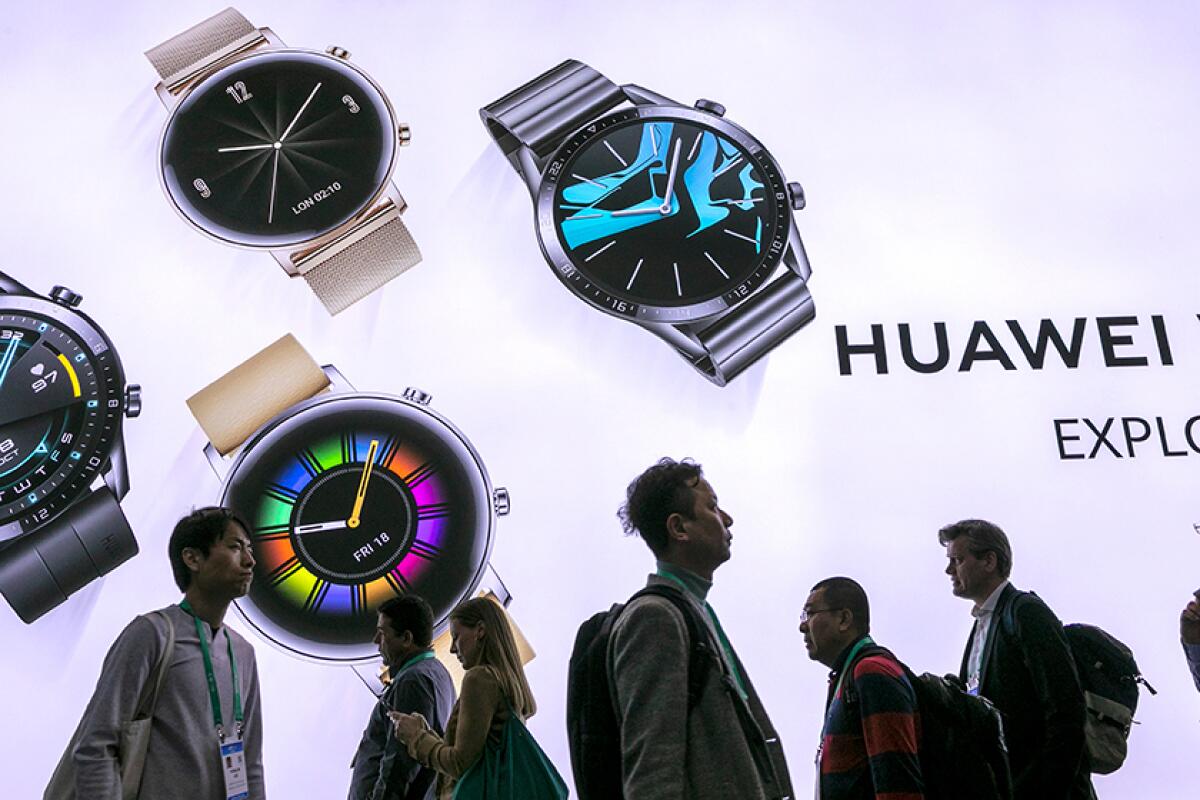Analysis: Technology, not tariffs, could determine the U.S.-China relationship

SINGAPORE — Though it took 18 months, the trade deal the U.S. and China are expected to sign Wednesday can be viewed as the easy part in the bid to repair the relationship between the world’s two biggest economies.
Far more challenging will be what to do about technology. The two countries are diverging into separate spheres when it comes to issues such as 5G networks, data storage and microchips — and forcing other countries to choose sides.
Whatever detente the Chinese purchase of more American soybeans and the slashing of U.S. tariffs achieves will be short-lived as long as the countries spar over the infrastructure powering the future economy, analysts say.
“Regardless of what happens with the trade-deal signing, the tech war will continue to escalate,” said Dan Wang, a Beijing-based technology analyst for research firm Gavekal. “The tariffs are the easy part. The tech will be difficult.”
The Trump administration, under the advice of national security hawks, has taken a confrontational approach to China’s emerging dominance in tech in myriad ways.
Among the most dramatic has been its handling of China’s leading telecommunications company, Huawei.
The world’s biggest supplier of wireless infrastructure and second-biggest manufacturer of smartphones has faced an unprecedented campaign by the U.S. to stunt its global expansion over deep concerns its hardware can be used by Chinese spies.
American officials have been lobbying foreign governments to block wireless providers from purchasing Huawei equipment, including the U.K., which received a visit from U.S. deputy national security advisor Matt Pottinger earlier this week.
Heavy scrutiny of the company started last January when the U.S. Justice Department indicted Huawei and accused it of stealing American technology and violating trade sanctions against Iran. That led to the subsequent arrest of the company’s chief financial officer, Meng Wanzhou, who has been under house arrest in Vancouver, Canada, fighting extradition to the U.S. She is the daughter of Huawei’s founder and chief executive, Ren Zhengfei.
In May, Huawei was placed on the Commerce Department’s so-called entity list, which prohibited U.S. suppliers from doing business with the company.
Huawei, however, announced on New Year’s Eve that it set new revenue records in 2019. Analysts said the company was able to circumvent the U.S. blacklisting by finding smartphone component suppliers in other parts of Asia — providing a glimpse of what’s in store for U.S. companies if they further cede their Chinese market share to foreign rivals.
Huawei also capitalized on a loophole that allowed U.S. suppliers that manufactured most of their parts overseas to continue selling to Huawei.
The Commerce Department recently sent new rules to the Office of Management and Budget that would close the loophole, the Wall Street Journal reported.
Huawei did not respond to a request for comment.
In addition to tackling Huawei, the Trump administration has made it harder for Chinese companies looking to acquire American firms, particularly ones that handle sensitive data or technology.
Prospective buyers will now face stiffer scrutiny because of new foreign investor rules unveiled by the Treasury Department on Monday that involve the inclusion of a panel of national security experts known as the Committee on Foreign Investment in the U.S.
China, for its part, hasn’t been welcoming to U.S. tech companies, either banning or limiting Silicon Valley giants including Google, Facebook and Twitter.
China has also severely limited access to its cloud computing market for companies such as Amazon, Microsoft and Apple.
China’s emphasis on enhancing its military’s technological capabilities has also worried U.S. national security officials about American companies sharing know-how in cutting-edge technologies such as autonomous vehicles.
Interdependence was long seen as a way to keep the U.S.-China relationship on solid footing. But the specter of quickly evolving new technologies that could shift the global balance of power has pushed the two countries toward a disentangling. That’s accelerated China’s motivation to become more self-sufficient in areas where it has traditionally lagged, such as semiconductors. Huawei, for example, is relying more than ever on its in-house chip manufacturer HiSilicon.
Meanwhile, U.S. venture capital investment in China is expected to have plunged last year to levels last seen in 2014, according to a report by the Rhodium Group and the National Committee on U.S. China Relations.
Whether the new trade deal includes any sweeteners in regards to tech remains to be seen. Details of the agreement have been sparse.
James Zimmerman, partner in the Beijing office of international law firm Perkins Coie LLP and former chairman of the American Chamber of Commerce in China, said it was possible the deal could lead to a resolution for Meng, the Huawei executive under house arrest in Canada.
“My guess is that there is general and vague language in the agreement requiring the U.S. and China to take follow-up steps to resolve the outstanding issues concerning Huawei’s compliance and security issues revolving around China technology,” Zimmerman said.
He described the deal — which involves more Chinese purchases of U.S. goods and services in exchange for the halving of U.S. tariffs on $120 billion of Chinese goods to 7.5% — as underwhelming in the grand scheme of things.
“This deal will be neither landmark nor epic and will lack any significant substance,” Zimmerman said. “The good news is that Trump is finally waking up to the fact that table -pounding and punitive tariffs don’t work.”
At least one economist pointed out that the size of China’s proposed increase in U.S. import purchases of about $200 billion was problematic.
Alicia Garcia Herrero, chief economist for Asia Pacific at Natixis in Hong Kong, said China could only achieve that level of imports two ways: by drawing down its valuable trove of foreign reserves from its current account or, more realistically, by taking market share away from other trading partners and handing it to the U.S.
“This is pure trade diversion and will allow China to keep its current account surplus intact,” she said. “The key losers [would be] Germany, Japan and Korea.”
That could create more tension at a time when countries are asking which center of power to gravitate toward, the U.S. or China.
More to Read
Sign up for Essential California
The most important California stories and recommendations in your inbox every morning.
You may occasionally receive promotional content from the Los Angeles Times.











